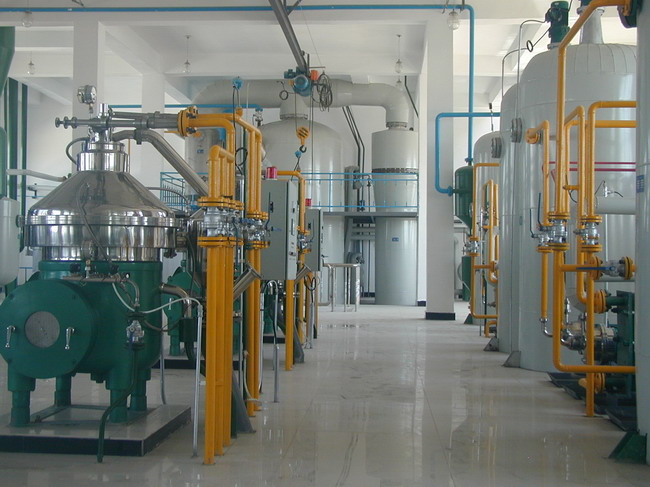Animal oil is animal fat. Animal oil contains a variety of fatty acids. The content of saturated fatty acids and unsaturated fatty acids is equivalent, which has certain nutrients and can provide extremely high calories. In addition, cholesterol in animal oil is also an important tissue component of human cell tissue, and an important raw material for the synthesis of bile and certain hormones.
Animal oil refining equipment is to refine crudely refined animal fats, because these fats contain blood stains left over from slaughter and other reasons, the acid value of the refined animal fats is too high or there are impurities such as collagen. These impurities will affect the edible quality and storage time of the oil.

Animal oil refining processes generally include degumming, deacidification, decolorization, and deodorization.
1. Degumming
The purpose of degumming is to remove the colloidal impurities in the crude oil, mainly some proteins, phospholipids and mucous substances. At present, acid refining method is mainly used for degumming, and the available acids mainly include sulfuric acid, citric acid and phosphoric acid.
2. Deacidification
Because the acid value of animal fat is too high after being boiled, it does not meet the hygienic standard of edible animal fat, so it needs to be deacidified. Deacidification methods include esterification deacidification method, distillation deacidification method, solvent deacidification method and neutralization deacidification method. The most commonly used method is neutralization deacidification method.
3. Decolorization
The purpose of decolorization is to remove the pigment components in the fat. Decolorization is often accomplished by adding neutral or acid clay, and a small amount of activated carbon can also be added, which can adsorb pigments and certain oil degradation products.
4. Deodorization
Deodorization is the removal of dirt and raw protein decomposition products mixed in from the outside during the processing, and the removal of aldehydes, ketones, lower acids, peroxides and other odorous substances produced by the oxidative rancidity of fats and oils.
The quality of animal oil refining equipment will affect the quality of animal oil products. The quality of the equipment will cause the produced animal fats to contain a lot of moisture and impurities, high acid value, easy to deteriorate, and it is difficult to guarantee the quality of the product. Therefore, if manufacturers want to produce high-quality oils, they must choose a set of quality-guaranteed animal oil refining equipment in addition to controlling the refining parameters during production.
Copyright © Henan Zhongxing Grain And Oil Machinery Co.,Ltd. All Rights Reserved. Powered by MetInfo